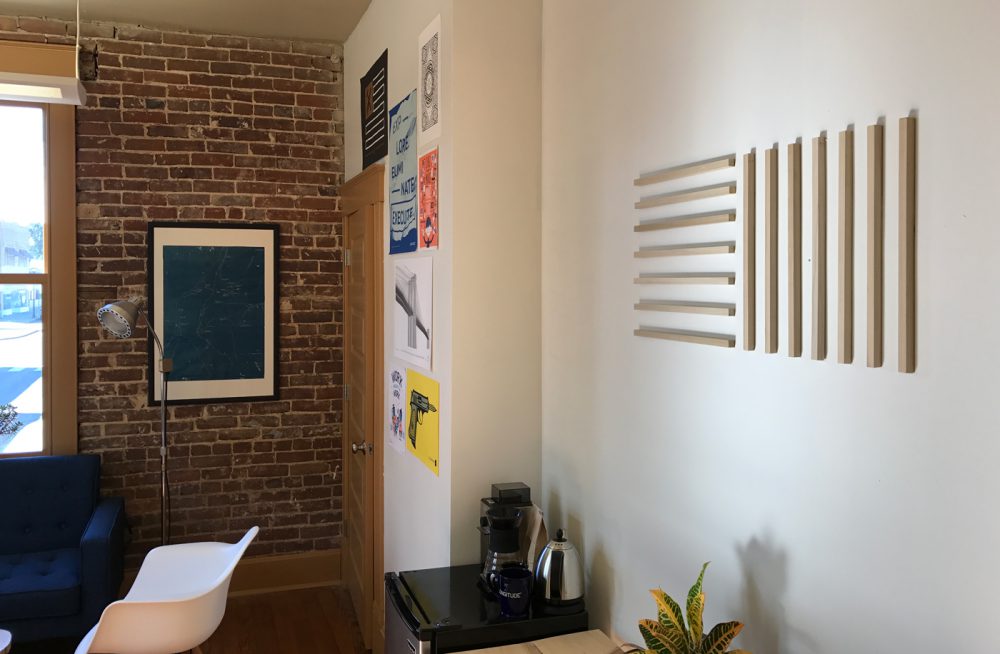The Big Ask: More Captivating Investor Pitch Decks
July 21, 2022
Jeremy Wells
Whether a seasoned pro or just starting out in real estate development, it’s important to remember that creating more captivating investor pitch decks is a vital part of your early investor relations and fundraising program.
I’ve assembled a series of tips and strategies for creating effective investor presentation decks. These decks can be used to build your initial list of investors and lenders and create excitement among early adopters of your project.
The tips and strategies are based on both my personal experience and the experience of real estate developers and investors who have been involved in dozens of successful real estate development deals, with the participation of institutional investors, brokerage firms, banks, and private individuals.
Storytelling for a Captivating Investor Pitch Decks
Great vision is a big part of what makes real estate development so exciting.
It’s not just about the money—it’s about creating something people will love, and that they can continue to enjoy for years to come. So it’s no surprise that vision is an integral part of every pitch deck you’ll ever make as a real estate developer. That vision needs to be clear and exciting, with a style that complements your brand.
You want your investors to understand why this project is exciting for you, and why you think it’s going to be a winner in the market—and part of that means telling them a story. You’re trying to connect your listeners with the vision you have for this project. You’re not just providing facts and figures—you’re bringing them into the world you see around your development, helping them feel what it might be like to walk through its doors or take a stroll through its grounds.
Remember, storytelling isn’t just through words, but the visuals and imagery. This is why I always prioritize developing a clear brand concept and vision for investor decks. Even if it’s an interim brand, it’s important to create the right visual conduit for your presentation to be delivered to your audience.
Key Content to Include in Investor Pitch Decks
- Summary of the Project. Start your deck with a solid summary of the project explaining “why now” and “why here.” This will help set the stage for why your project is unique, important, and well positioned to succeed.
- Why Now? What are the market trends that make this the right time to start this project? A market need exists in the geographic area and there is demand for what your project will provide.
- Why Here? What makes this site or location special? Is it a growing market? Is it a booming industry? Does it have amenities that make it an attractive place to live or work, such as walkability to restaurants, shopping, or public transportation?
- Market Snapshot. You want to provide some context for the market opportunity. Briefly describe the market situation and the gap you’re planning to fill. For example, “The Dallas real estate market is experiencing an increase in demand for single-family housing due to its growing population and increasing employment levels.”
- Overview of the Opportunity. Next, provide a high-level overview of the project at hand. This includes a few high-level, key bullet points. Include any relevant information about how your company can execute this project successfully.
- Strong Team with a Resume of Experience. Describe the people involved with this project and their backgrounds. For example, “We have assembled a team that includes leaders from various industry-related fields.” Including resumes will help bolster your point.
- Capital Invested. This is one of the most important pieces of information for an investor to know about development. It’s basically how much money has been put into the project so far, including all equity and debt sources.
- Project Timeline. It’s also helpful to show a timeline of when the various stages will take place over time. In the case of multi-stage projects, it can be helpful to show multiple timelines with staggered start dates for each piece. A timeline can also help investors understand how long they would potentially have to wait for their investment to pay off if they choose to participate in a specific project and what the expected rate of return is.
- Quality Underwriting with Defendable Assumptions. A quality investor deck will show how well you understand your project and can make it a reality. It starts with making sure you have a solid underwriting process in place before you ever build. Your underwriting will take into account the time frame of the project, equity requirements of each partner, expected returns, possible risks and returns, and more. It’s the best way to make sure that all your i’s are dotted and t’s crossed before you even get started on building or renovating your project.
- Projected return and actual return (ROI). Investors will want to know is how much they’ll make when all is said and done. That’s why it’s necessary to be clear about how you come up with the ROI (return on investment). There are several steps that go into calculating ROI; ensure that each of them is clearly explained so there’s no confusion about how you arrived at your number. Make sure that you also explain any assumptions that were made as part of your calculations as well.
Visual Design of Investor Pitch Decks
A great real estate investor presentation deck is like a good book — engaging and entertaining.
The design should be modern, crisp, and visually interesting. Most importantly, the information that you want to convey to prospective investors should be accurate and easy to understand. Don’t try to pack too much information into your presentation deck.
When I’m meeting with potential investors, I try to show them that they can trust me. One of the ways I do this is by giving them an excellent first impression—if I can get their attention right away with a creative, visually interesting design that provides important information in a way that is easy to understand, they will be more likely to invest.
Quick Tips for Creating a Well-Designed Investor Deck
- The flow of the presentation decks should be easy to follow and understand
- Use visuals that reinforce your key messages
- Use photography to tell a story
- Show images of what success look like
- Minimize text wherever possible, but ensure that any text contains important information that supports your key messages
- Make sure visuals are bold and readable from a distance
Investors Will Ask These Common Questions
Investors will have plenty of questions on their minds, especially with regard to their money. A good presentation can go a long way in helping your company understand the right route to go forward. The more you know about the investors, the easier it is to strategize and plan on how to incorporate what they are looking for into your business plan.
Here are some of the questions that investors will likely ask:
- When is the money due? Is the capital all due at once, or can it be paid over time? What happens if an investor can’t make their payment by the deadline? If your investors’ money will be due all at once, you’ll need to make sure that there is sufficient, immediate liquidity for them when the time comes. If the capital is due in stages, you’ll have to have a plan for when and how much money will be needed at each phase of your development process.
- Where is the money held? You don’t want your money sitting in a bank account that isn’t FDIC insured or might be susceptible to theft.
- What guarantee or exposure? Investors will want to know what guarantee or exposure if any, they will have. What are their options if things go south? Are there exit strategies?
- When/How will they see returns? How soon can an investor expect to see a return on their investment? Are returns paid quarterly, or annually? Be sure to tell them about any priority in return payments for different groups of investors or if there are any provisions for paying earlier than promised in order for the project to stay on schedule. What is their actual return — for longer holds it could be different metrics like IRR, Cap Rate, or COC
- What is the final return per dollar? As an investor, you want to know how much your money will return. This is a simple calculation, but you need to understand and be able to explain your assumptions accurately.
In General…
Make It Look Good, Make It Look Easy
It has to be very clear what’s going to be done, and you need to present your ideas in a well-organized, visually pleasing way. Don’t get lost in the weeds of the deal, or go too far off course with the main narrative. Lenders in particular never like the, “We’ll start this way but if the flag comes in with something we’ll turn right, or if we can raise more we’ll make a left.” Your plan should be fine-tuned and exact.
Know Your Stuff
When asked a question, you should be able to answer immediately. If you can’t answer the above questions don’t send out the package because you are negotiating against yourself and will lose an interested party for a project that may be very viable.
—
Investors have many options when it comes to where their money goes, and you need to make sure that your vision is good enough to warrant a spot at the top of the list. Work with others who bring complementary skillsets to the table can help ensure that your presentation materials are sharp. In the end, remember that the best presentation is done by those who know their subject matter well and can simplify complex things into easy-to-understand concepts.
Thank you to the following people who contributed their ideas to help me write this article:
- Ben Rafter, Springboard Hospitality
- Eric Sullivan, Sullivan Capital
- Jeremy Wells, Flyover Developments
- Dave Mashburn, Mashburn Development
- Brett Krueger, Real Estate Developer
Jeremy Wells
Partner at Longitude°
Jeremy is the author of Future Hospitality and Brand Strategist at Longitude°. As a member of the Education Committee for The Boutique & Lifestyle Leaders Association (BLLA) and a content contributor to Cornell University’s Hospitality Vision and Concept Design graduate program, he is a committed thought leader in hotel branding, concepting, and experience strategy.





